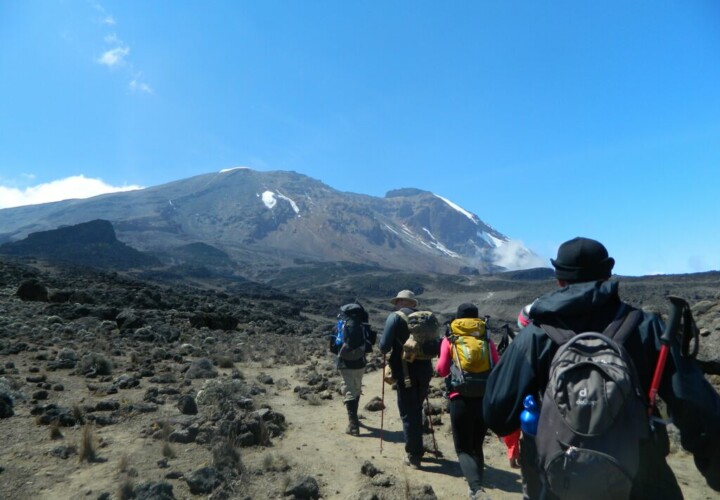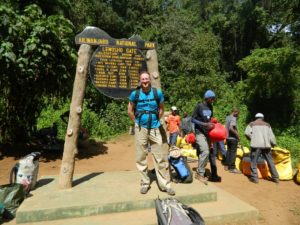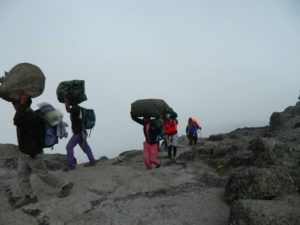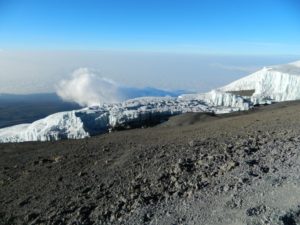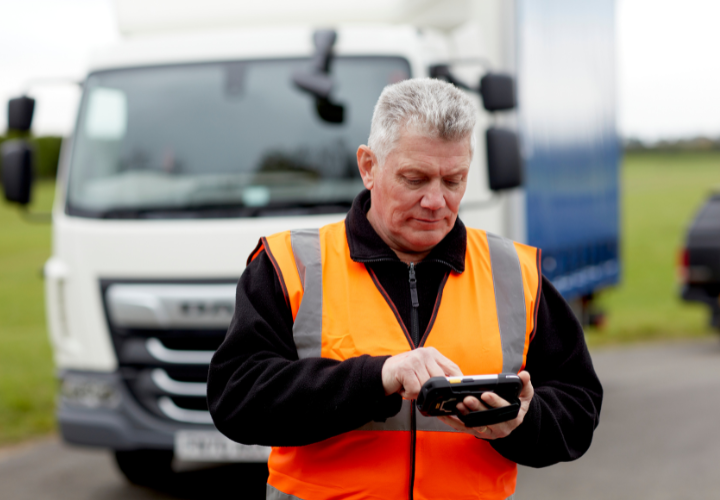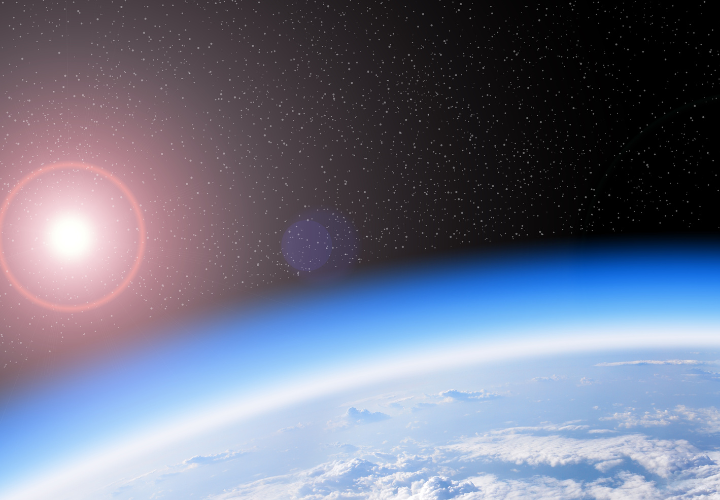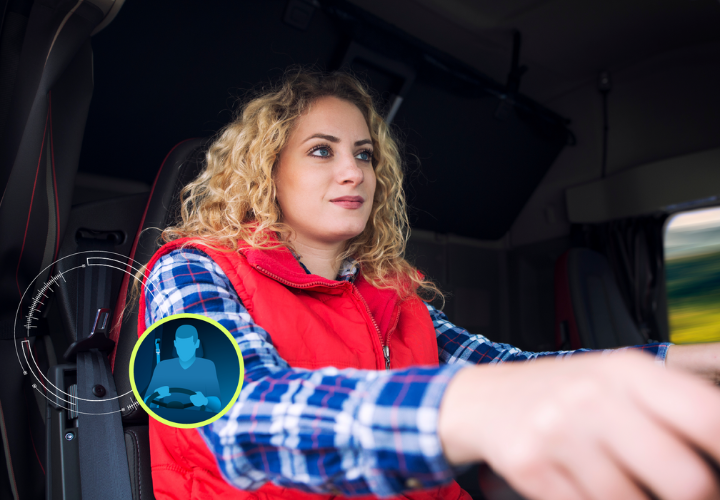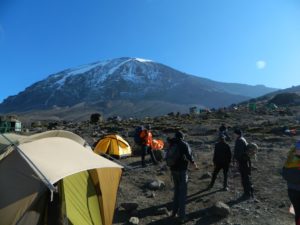
On Friday 24th July, my school friend, Matthew Challans and I flew out to Tanzania via Istanbul to take part in the ascent of the highest freestanding mountain in the world, standing at 5,895 metres (or 19,341 feet).
We were lucky to have a few days to explore Moshi, a town in the foothills of Kilimanjaro and were able to take in the great, albeit a bit scary views of the mountain, before we set out on Monday July 27th on the Lemosho Route.
There was also an ulterior motive for doing this, to raise funds for STEPS. It is a charity close to my heart. My son William is to undergo a further operation in September and again STEPS has continued to provide us with great help and support. My target was to try to reach £2500. I have now exceeded that amount and have managed to raise over £2700. This will make a massive difference to the charity and it gives me another sense of pride that I have managed to reach this amount. There are so many people I’d like to thank, you know who you are.
Climbing Kilimanjaro has been one of the most amazing experiences of my life and the biggest personal achievement I have ever completed. Read a day-by-day account of the amazing, challenging journey below.
But, after Kilimanjaro, what’s next? Well STEPS have given me a charity place in next year’s London Marathon, but that’s another blog article….
Day 1
The first day would be an “easy” 3-4 hour trek to our first camp, hiking 6km through rainforest to a height of 2895 metres at Mti Mkubwa (Big Tree) camp. We weren’t disappointed, with many sightings of Colubus Monkeys during the day along and beautiful green landscapes. Unfortunately the monkeys tend to shout at each other quite a bit during the night, and with the daily intake of four to five litres of water, nights can tend to be quite interrupted with many visits to the toilet tent.
Day 2
This would be much tougher, as we had decided to complete a 7 day trek of the Lemosho Route and not the usual 8 day trek. This involved skipping a camp and therefore a much longer day. We walked 16km over 10 and a half hours ascending over 1000 metres across the Shira Plateau through Kilimanjaro moorland. With only 12 hours of daylight, reaching Shira 2 Camp at dusk was a great relief. By this time we had sight of the Western Breach and we were above the clouds. Headaches were plentiful as the altitude started to take effect. Painkillers, Diamox (for altitude sickness) and more and more water were important medicines now. Thankfully our appetite hadn’t suffered and with the chef cooking dinner at the campsite providing three courses at each meal, we were getting plenty of lovely food for the long hikes. It was straight to bed after tea and our daily health check where our pulse and blood oxygen levels were checked.
Day 3
The third day would involve an acclimatisation exercise, trekking up to 4600 metres to Lava Tower (the height of base camp), to ensure our body could get used to the height and lack of oxygen, for when we return to that height in a couple of days when we reach Base Camp. Day 3 is when I started to have doubts about whether I could achieve the goal of reaching the summit. Day 2 had really taken it out of my legs and my mind. After only half an hour walking I had hardly anything left. Each break I would find it hard to start walking again. Thankfully I’d put some flavoured electrolyte’s into my 3 litre water bottle to try and help drink the water, which by now was being obtained naturally from the mountain streams and had the taste of chemicals due to the water purification tablets. The energy boost came at the right time, and in the end I managed to reach 4600 metres quite easily with no major effects of altitude apart from niggling headaches. It was also a big confidence booster. Unusually the last hour of the ascent to Lava Tower was completed in snow showers and you could see the effects of the snow on the summit as more of the peak became covered in snow.
After lunch at Lava Tower, the walk high, sleep low method ensured a 600 metre descent into the Barranco camp, where the snow now had turned to rain, and a descent on slippy rocks became quite tricky. The camp by now was covered in cloud, and I am sure this will be the only time in my life that I will ever sleep in a cloud.
The fourth day involved the climb of the famous Barranco ‘Breakfast’ Wall. You would think a man who is afraid of heights (and the dark) really shouldn’t be climbing one of the world’s highest mountains. Today would be the day that my nerve was really tested, as the Barranco Wall is a 1200 foot climb of what looks like a massive cliff face from the camp. Thankfully it’s not as bad as it looks up close, although with massive drops, it’s not the easiest activity to do for someone with vertigo. With the overnight cloud having disappeared, nice crisp views of the drops below made things much more difficult mentally. Negotiating the wall alongside porters, carrying equipment on their backs and heads can be quite difficult. It’s at this point that you really do appreciate the work the porters do. Without them, climbing the mountain would be impossible. They are unbelievably humble, often smiling and saying ‘We are here for you’, along with ‘Jambo (Hello), Mambo (What’s Up?) and Pole Pole (Slowly Slowly)’. I couldn’t help but realise that we really wouldn’t be there if it wasn’t for them.
The wall was the start of a 7km trek that involved crossing the Karanga Valley (both down then back up again), and reaching Karanga Camp, which gave us the most breath-taking view of all the campsites. In front would be a view of Moshi town, which when lit up at night, was just awesome. Turning 180 degrees and the peak was getting bigger as we got closer. The view of the stars at night is something I just can’t explain. All seem to be much brighter and there are so many more to be seen as there was no light pollution to spoil the view.
Sleeping became much easier as the body gets used to sleeping at altitude and the pure exhaustion of the day assists in getting to sleep quickly. Unfortunately every sleep is interrupted four to five times a night as the amount of water intake during the day takes effect. Altitude also tends to make activities so much harder. Eating food takes much longer and I remember finding it unusual that I’d be chewing my food for ten minutes before attempting to swallow it.
Day 5
The fifth day would be our ascent into Kilimanjaro base camp, which would then involve a short acclimatisation walk before an early night ready for summit night. By this point the landscape is Alpine Desert and is very sparse, with very little vegetation. Although most of the trek had been above cloud level, for some reason the clouds had risen and the day was spent climbing 600 metres back to 4600 metres, with very few things to see. By this time the altitude had hit one of our group quite badly and unfortunately they had to be rushed down to a lower camp. Barafu Camp (Base Camp) was reached and I can only describe it by saying it was like putting up a campsite on the side of a quarry. It was unbelievably hard to walk around due to the landscape of dust, scree and rocks. It was an insight into what the landscape would be on our ascent to Uhuru Peak, the summit of Kilimanjaro.
The afternoon would involve a climb to around 4700 metres to aid in acclimatisation, a big tea and then an early night. We’d be able to get around just 3 hours sleep before being woken up at 11.30pm, to start our ascent to the summit.
Midnight arrived and we were wearing a large number of layers including thermals, down coat, three sets of trousers. Making sure cameras were at the ready, batteries were kept warm so the cold didn’t affect them. Daypacks were filled with water, which would probably only last an hour until it froze. A cup of tea and handful of biscuits were attempted before the long final ascent was started. The mountain was black apart from a beautiful zig zag pattern of light where you could see the head torches of fellow climbers as they made their way up the mountain. The climb itself was brutal with a major fight to stay awake, whilst climbing in freezing conditions with just yourself and your thoughts. Thankfully the layers kept me warm, but it wasn’t long before my water froze. The walk continued with fighting the temptation to look up to see if we were getting closer. Unfortunately, every time I looked up, it appeared as if we had made no progress and the negative mindset crept in. We continued and continued, until our guide, Ezekiel, who had been amazing the whole trip, tells us that Stella Point (the first summit point on the ridge of the mountain) was close….”Only an hour and a half to go” was the shout. It became a running joke in the end, Ezekiel’s “close” would basically mean still many hours to go.
At 6.30am the sun started to break through the clouds and the sight was amazing. You could see Kenya and thankfully we could see our first target, Stella Point. It looked close, it wasn’t. But by around 7.30am we reached Stella Point and we knew we were getting ever closer to the summit. Uhuru Peak would be another hour away, but it’s at this point that I really started to suffer.
I hadn’t realised but I was starting to slur my words, felt extremely dizzy and suffering from really bad headaches. I had come so far and didn’t want to miss out by an hour or so. Ezekiel started to give me glucose powder and fruit juice to try and boost my energy. I was struggling to get water as most of it had frozen. I was walking really slowly, but the guide thought I’d make it. Most of the next hour was a bit of a blur, but I remember Matthew and the guides helping me along, talking to me, taking my mind off the altitude.
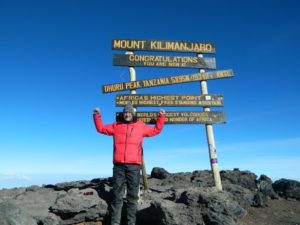
After photos and a look around, it was time to descend. My legs had gone and the altitude had started to show its affects on me again. In the end I had to have help to descend. I had absolutely nothing left in me and I had a potential four hour descent back to Base Camp ahead of me. The landscape was pure scree and I spent the next three hours, sliding down the mountain with the help of the guides. By the time we were closer to the camp, a few of the porters had come up to help. I was absolutely exhausted.
We reached Base Camp at around 11.30pm and a short nap and then food followed. The day hadn’t ended though. We still had another 5 hour walk to our next camp, further descending the mountain. Day 6 was ruthless. It would involve over 17 hours walking. The final five, involved the most awkward of descents, the surfaces of the path were so uneven that every step had to be taken carefully and with very little energy. It was easily the hardest thing I had ever done in my life. We arrived at the next camp at dusk and had tea followed by a health check which pretty much proved I was physically exhausted. The chef had baked an actual sponge cake with icing saying ‘Congratulations 4 all’ on the mountain, especially for the group. I had no appetite at all, however I made room for cake. It then was followed by the best night of sleep I’d had on the mountain.
Day 7
On the final day we had a short 4 hour walk to the mountain gate. The day started with the tipping ceremony where porters and guides would be given tips from the group. Each person deserved everything. They work so hard, setting up the camp, packing it away. Overtaking you during the day to ensure everything is ready for you for when you arrive. They were absolutely amazing and every single one always had a smile on their face. The ceremony was followed by a number of songs before we reached the mountain gate and returned to the hotel to receive our certificates and a well deserved beer. As part of my fundraising I pledged not to drink alcohol until I’d reached the summit, this was the first beer of the year for me, and it tasted sublime.

